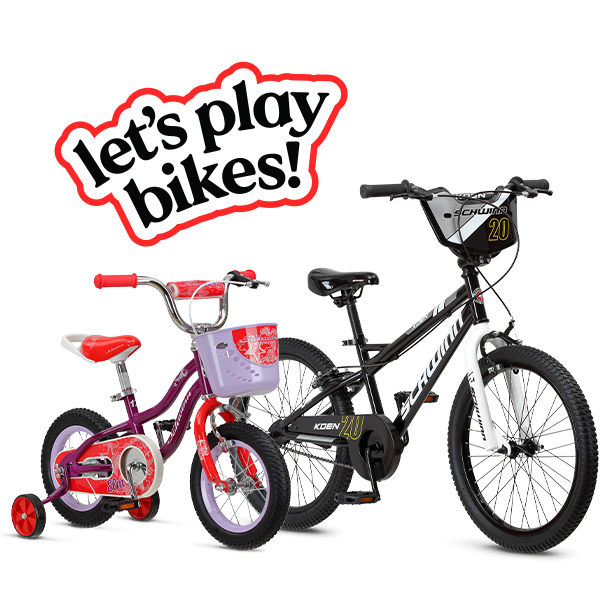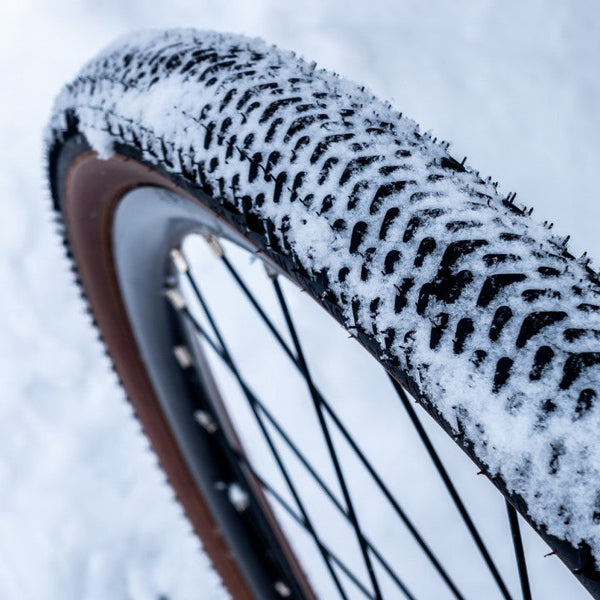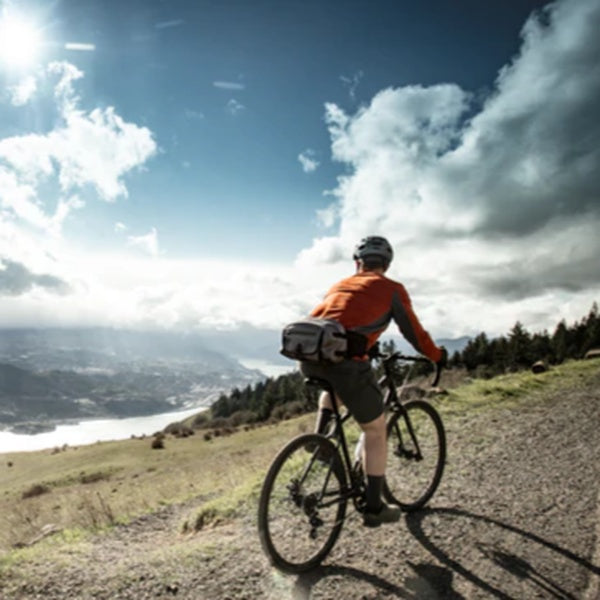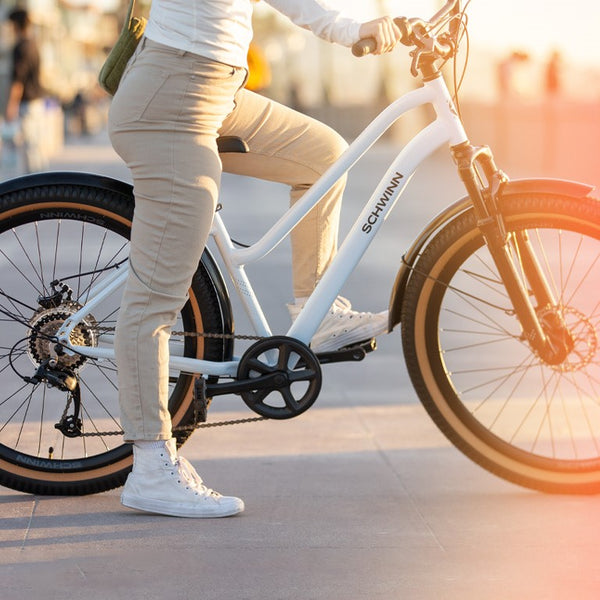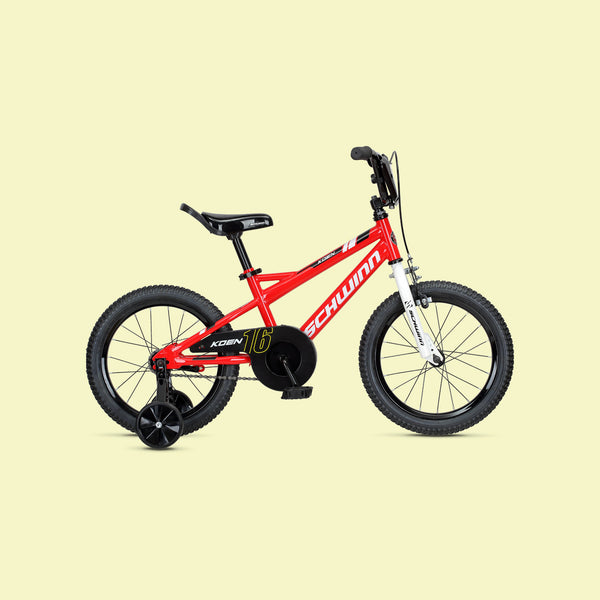Riding a bike is one of the joys of being a kid. You can do it with parents and friends. It strengthens muscles and promotes balance. It inspires confidence and self-reliance. Quite simply, bike riding is healthy and wholesome fun. Following a few basic safety rules can help make cycling even more fun for kids. Both the American Academy of Pediatrics and the National Highway Traffic Safety Administration have easy-to-follow safety guidelines for bike-riding kids. We'll hit some of the highlights here and add a few tips from parenting and biking experts that will help ensure your child's next biking adventure is filled with equal doses of wellbeing and enjoyment.

1. Right Size It
When choosing a bike for a kid to ride it's vital that it fits them correctly. A right-sized bike makes for a comfortable, confident ride while a bike that's too big or too small can lead to injury or accidents. Start things off right by choosing a kids’ bike that fits them well from the start. Schwinn has also created a SmartStart bike solution to help your child’s bike “grow." Check out our guide to kids’ bike sizes to see how to properly fit a kids’ bike and learn more about our SmartStart kids’ bikes.

2. Before The Ride
"One of the best safety rules for biking with kids is to inspect all equipment before starting," said Elizabeth Hicks , co-founder of the blog ParentingNerd. "It’s good that you’re using a helmet, knee pads, and elbow pads, but you have to check if everything is working properly before you get on the road. Inspect the straps on the helmet and pads. Check air pressure for all tires and assess if the brakes are functional. This can help prevent a lot of injuries."

3. Start At The Top
The number one rule, especially her at Schwinn, is that riders of all ages must wear a properly fitted helmet. For a detailed look at how to fit a helmet, be sure to read our safety guide, How to Fit A Helmet.
Another helpful helmet tip comes from pediatrician Dr. Pierrette Mimi Poinsett, an advisor to the MomLovesBest blog. If your child skateboards or plays hockey, she said, it’s important to remember that those sports require dedicated helmets that should not be used for biking. "Skateboard helmets are made for multiple falls because falls are common," said Dr. Poinsett. "Bike helmets are made for single major falls."

4. The Single File Rule
A general guideline to keep in mind is that kids under 12 should avoid riding on roads alongside motor vehicles altogether. We know that not every community is blessed with a robust network of bike paths, so if your kids must ride on the road, remember that they should always ride single file.
For young riders just starting out, riding with an adult that will model safe riding habits is key. Ideally, it's riding with two adults – one who stays ahead of the young riders and one who stays behind.

5. Build Up To It
To get your kids ready to ride on roads, Aaditya Bhatta, editor and founder of The Riding Kid, suggests first practicing with adult riders in places where cars are few and far between. "If you are cycling with your kids, try to bike in an area with low car traffic and adequately teach them how to control and stop their bikes," said Bhatta. "Teach your kids to always keep both their hands on the handlebars. Your children must also know that they must stop and look both ways when riding through an intersection. Similarly, let your kids know about vital street signs and traffic lights. Always keep your kids within your sight when teaching them to stop their bikes and look behind every few minutes."

6. Be Visible
It used to seem that fluorescent colors used to only worn by a small group of hard-core bike commuters, but neon oranges, pinks and yellows have slowly become standard issued gear for all cyclists. Let the kids know that an easy way for them to increase the likelihood that motorists will see them is if they wear bright, high-visibility clothing. Encourage them to wear neon, fluorescent or bright colors whenever they go for a bike ride. As rides start to turn to dusk, bike lights are another great way to be seen. Let them know it's OK to stand out, especially when it comes to safety.

